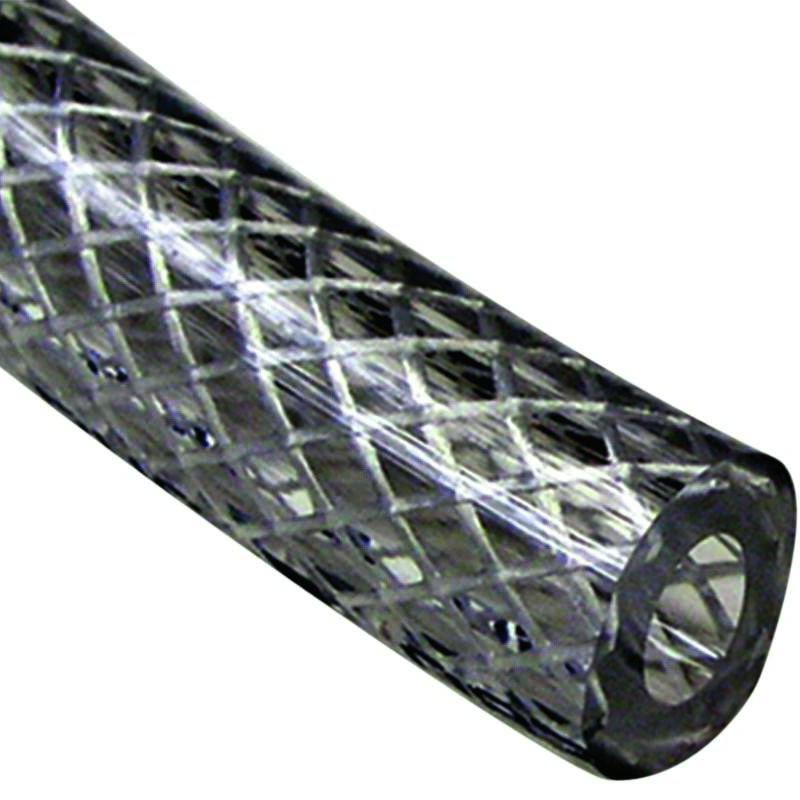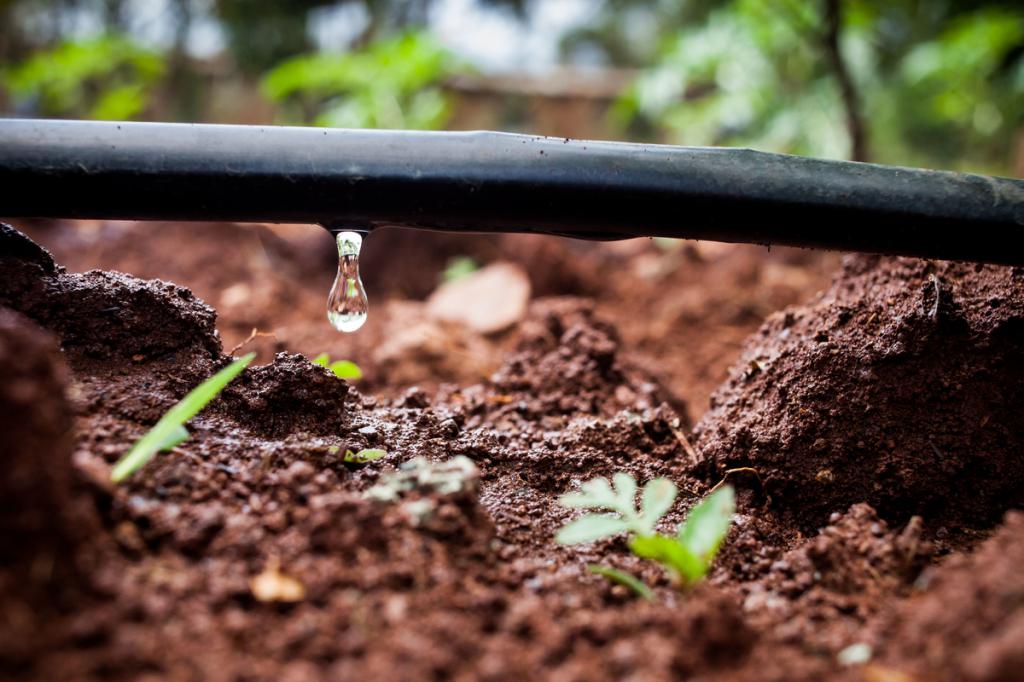A good harvest of fruits and vegetables cannot be obtained without proper plant care. One of the most important elements is watering. You do not have to wait for regular rains at the right time from nature. A reliable assistant in facilitating the process of watering plants has become a garden hose. Modern industry offers a wide range of products that can satisfy any needs of amateur gardeners.
Specifications
Watering can be organized in several ways: from the most primitive - the usual direct water supply, to the construction of entire irrigation systems. You can’t do without using hoses. Key product features:
- Material. Strength, usability, and durability depend on it. The hose can be made in one or several layers. Reinforcement significantly increases the performance of the product.
- Length. You can choose any size. As a rule, sales representatives offer hoses from 7.5 to 100 meters. Selection of the appropriate length depends on the distance from the point of water intake to the extreme point of irrigation. A long standard garden hose - 50 m, 100 m, short - 10 m, 20 m. In each store, the seller can cut any length from the bay without any problems.
- Diameter. Usually measured in inches. The most popular: 1/3 is 13 mm, 5/8 is 16 mm, 3/4 is 19 mm, 1 is 25 mm. A weak pump will not be able to provide normal pressure with a large diameter hose.
- Operating pressure. The quality of the product and the number of layers determines the level of pressure that it can withstand. What does it mean? The working pressure of garden hoses for irrigation, as a rule, does not exceed 5 bar. Single-layer withstand up to 2 bar, durable multi-layer with reinforcement - up to 10 bar. High pressure hoses (they are used in the installation of irrigation systems with high performance) can withstand 50 bar.

Rubber
A rubber garden hose is most common for most gardeners. Not so long ago, there were simply no other options. They differ in diameter and number of layers. To date, this is one of the most common options for giving. Advantages:
- wear resistant;
- calmly tolerates temperature changes;
- can be stored in an unheated room;
- resistant to mechanical stress;
- when twisting, it does not deform;
- elastic;
- withstands pressure up to 40 bar (multi-layer);
- affordable (it is in all hardware stores);
- in stationary irrigation networks can be used up to 20 years.
Disadvantages:
- heavy;
- due to toxicity, cannot be used for drinking water.
PVC
The hose garden reinforced polyvinyl chloride (PVC) is popular and in demand in the modern market. They are available in various modifications: single-layer, multi-layer, reinforced, corrugated, smooth, various colors. What to choose? The running options include multilayer, reinforced with fabric thread. Its main advantage is high wear resistance. Other advantages:
- easy;
- withstands high pressure (up to 35 bar);
- strong, does not break from excesses and twisting (multilayer);
- not stretched;
- withstands temperatures up to -60 0 .
Minuses:
- due to the tissue layer is not too flexible;
- at low temperatures it loses elasticity.
When choosing a reinforced product pay attention to the method of weaving. Mesh is preferable, since the cross-shaped reinforcement is prone to swelling and further to cracking. The number of layers matters, the more there are (up to 6), the more durable the product.
Plastic
Single-layer garden irrigation hoses are usually very light and flexible. Smooth inner walls provide higher throughput than rubber counterparts. Corrugated are comfortable in that they do not slip in the hands. They can be of any color, but most often single-layer products are transparent.
Disadvantages:
- during operation, the bends cause damage to the hoses (corrugated from kinks do not break);
- may crack when exposed to the sun or cold;
- calcareous deposits often form on the inner walls, so they cannot be used for drinking water;
- transparent hoses become a hotbed for algae and quickly clog;
- withstand pressure not more than 5 bar;
- easily damaged on a rough surface (asphalt, stones, gravel);
- quickly wears out, even a corrugated hose does not serve more than 2 years.
Nylon, Silicone
Garden hoses for water can be made of other artificial materials:
- Nylon. Main advantages: flexible, lightweight, quite durable. It is very easy to twist. Of the shortcomings, susceptibility to temperature extremes is noted. In the heat it loses shape, in the cold it hardens and deforms. Service life within 2 years. Usually industry produces single-layer hoses.
- Silicone Such products are actively advertised and are gaining more and more popularity. The main advantages: very flexible, do not break, withstand temperatures from -20 0 to +40 0 , are available in various color combinations.
Disadvantages:
- do not withstand pressure more than 3 bar;
- subject to stretching;
- with high pressure they can burst.
The industry produces several options: single-layer, reinforced, multi-layer and spiral. What are their features? The silicone single-layer garden hose (the reviews of gardeners are unambiguous in this) is especially prone to deformation: it swells, stretches, bursts. It is best used for gravity watering of beds. Reinforced and multi-layer models are much more reliable. They regularly serve for several years, without changing their characteristics. An interesting option is a compact spiral hose. In the idle state (without water), its length does not exceed 1 meter, when connected, it stretches. Very light and easy to use.
X-HOSE
A relatively new model. It is a double structure: inside is a latex tube, very high quality plastic (acrylonitrile butadiene styrene), the top coating is fabric - polyester fabric. Stretchable garden hose is available in lengths of 7.5 m, 15 m, 22.5 m, 30 m. Main advantages:
- compact;
- easy;
- able to straighten creases;
- resistant to seasonal temperature changes;
- stretches independently under the pressure of water (lengthens three times);
- automatically shrinks after the water supply stops;
- working pressure - 16 bar;
- included a special nozzle for regulating the water stream (7 modes).
Disadvantages:
- can only be used on smooth surfaces;
- fabric coating is easy to cut and tear;
- for normal operation requires a constant pressure of water.
For winter storage, the hose is cleaned in a room with a constant positive temperature.
For different irrigation systems
In addition to the classic watering garden hoses with a round inner cross-section, there are special finely porous and multi-channel ones. They are used to organize drip and rain irrigation:
- Drip. It is a flat tape with small holes at some distance from each other. It is laid on beds to provide watering under the root. As a rule, enough for several seasons.
- Oozing. The main material is polypropylene or rubber. This is a ready-made system for constant watering, you just need to connect it to a water supply source (to a water tank). Microholes are located on the surface of the garden hose, due to which humidification occurs along the entire length of the system, without exception. It requires mandatory installation of the filter and flushing the hose, otherwise it may clog, and algae will appear on the inner walls. It is placed on the beds and slightly dug up with earth.
- Porous. The principle of operation resembles oozing. Material - rubber. The porous surface is designed for slow transmission of water. It is very convenient on uneven surfaces (steep slopes). This method of irrigation is economical in terms of water flow.
- Spray. If the above options do not require a good pressure of water, then this one works under pressure. It has three rows of microholes through which the finest trickles of water break through. They form a kind of rain fog. Its height, irrigation area and intensity can be adjusted by water pressure.

Related devices
For the convenience of operating hoses, various devices are used. Connections, adapters, watering guns, sprinklers, taps, clamps, connectors - these are trifles that greatly simplify the work. With their help, you can quickly build an irrigation system in a summer cottage. The simplicity of construction and the possibility of repeated installation provide such products steady demand.
For winter storage and transfer of the watering sleeve, a garden hose reel is very useful. They can be stationary or mobile. There are several different types:
- wall brackets are mounted on any suitable wall, a hose is simply wound on it;
- an axis rotating coil with protection against twisting and hitchhiking, equipped with a winding handle;
- wall mounted automatic coil mounted on the wall, has the function of automatic reeling;
- a reel on a trolley, a mobile model, allows you to easily move the hose across the site;
- inertial, allows you to rewind the hose without much effort, minus the fixed length of the hose.
The choice
When choosing a garden hose, you should pay attention to the following points:
- length, determined by the area of the garden plot or garden;
- diameter depends on water pressure;
- for many years of operation, it is better to purchase multilayer products (at least in three layers: directly in contact with water, a reinforcing layer and a wear-resistant protective layer);
- transparent hoses promote the growth of algae in them;
- ribbed do not slip in the hands;
- do not take hoses made from recycled materials, as a rule, they are toxic, therefore it is better to choose an environmentally friendly option;
- the nylon braid is considered the strongest;
- Reinforced products are less prone to kinks and kinking.